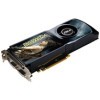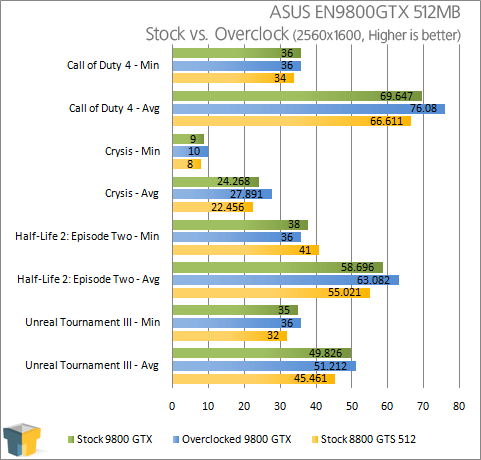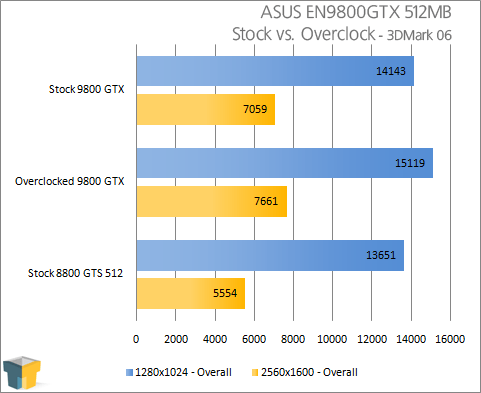- Qualcomm Launches Snapdragon 4 Gen 2 Mobile Platform
- AMD Launches Ryzen PRO 7000 Series Mobile & Desktop Platform
- Intel Launches Sleek Single-Slot Arc Pro A60 Workstation Graphics Card
- NVIDIA Announces Latest Ada Lovelace Additions: GeForce RTX 4060 Ti & RTX 4060
- Maxon Redshift With AMD Radeon GPU Rendering Support Now Available
ASUS EN9800GTX 512MB

It’s not too often that the fastest single-GPU available is also affordable, but the 9800 GTX is just that. At just over $300, it delivers incredible performance at all resolutions and also turns out to be amazingly overclockable. It’s just too bad that the 8800 GTS 512 is not much slower…
Page 8 – Overclocking the ASUS EN9800GTX 512MB
Defining a “Stable Overclock”
If you’ve read any of my processor reviews, you are probably aware that I don’t much care for an unstable overclock. To me, a high overclock is only good if it’s stable, because realistically, who purchases a product just to find a maximum overclock? Not too many, which is why I focus on finding the max stable overclock, rather than an overclock that can barely pass a minor benchmark.
To find a max stable overclock, I first find an overclock that I believe could be stable. Once I do that, I’ll run a single loop of 3DMark 2006 to test for stability and to look for artifacts. If that run passes successfully, I’ll jump into a game quickly to see if the same results are exhibited in real-world gameplay. If that proves successful, I then run a loop of 3DMark 2006 for 4 – 8 hours at 2560×1600 2xAA to stress the card to its limit.
If after that point, the card is deemed stable (as in, no crashes occurred and there are still no artifacts), then I will proceed with benchmarking four select titles again: Call of Duty 4, Crysis, Half-Life 2: Episode Two and also Unreal Tournament III.
All overclocked testing occurs at 2560×1600 for the simple fact that it’s such a strenuous resolution. For comparisons sake, I also include results from a card that’s a step up from our overclocked model.
ASUS’ EN9800GTX
As seen on the first page of this review, the stock clocks for the 9800 GTX are 675MHz on the Core, 1688MHz for the Shaders and finally, 1100MHz on the Memory. Sadly, we were unable to boost the memory at all, but luckily, the other clocks went sky-high.
After much testing, my max stable overclock was 820MHz Core, 1820MHz Shaders and a retained 1100MHz Memory. While the 9800 GTX might be lacking a little in the stock frequencies, the card overclocks like a dream. 145MHz is no small increase. But will we see real-world differences?

The answer would be yes, but it depends on the title. We saw a nice 7FPS increase in Call of Duty 4, but only a 1.4FPS increase in UT III… odd. We did see a 3.5FPS increase in Crysis, however, where any extra FPS is truly appreciated. That game ran really well with our overclock.

For those looking to boast high 3DMark scores, you’ll be happy to see nice improvements here. Overclocking our card gave us almost a 1,000 point boost at 1280×1024, and a respectable 600 point increase at the uber-high resolution of 2560×1600.
Overclocking Note: The world of overclocking is an unfair one, in that one persons max overclock might be much lower than anothers. Chances are good that you could reach the same overclock we did here, but of course, different computers can, and will, deliver differing results. Lots of factors can come into play, so please don’t be upset if you are unable to attain the same overclock we did.
Support our efforts! With ad revenue at an all-time low for written websites, we're relying more than ever on reader support to help us continue putting so much effort into this type of content. You can support us by becoming a Patron, or by using our Amazon shopping affiliate links listed through our articles. Thanks for your support!





